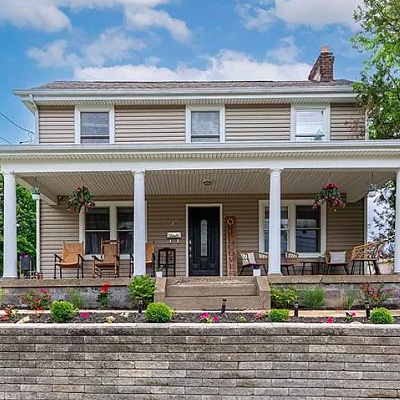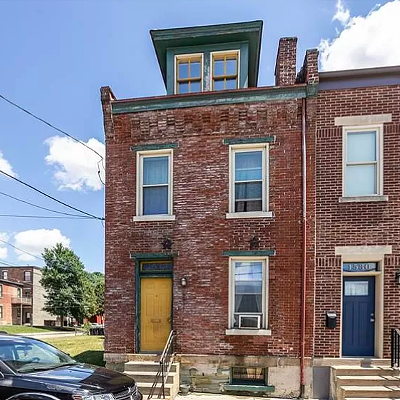Generally speaking, it's a lot easier to move people than it is to move buildings. Unless, of course, the people are fundamentalists ... in which case it's simpler to just build the structure around them. Preferably without installing any doors.
The story of Bellefield Presbyterian, by contrast, is that of a church trying to adapt to a city changing all around it.
To begin with, the building we now know as Bellefield Presybterian -- a sort of lantern-looking structure that presides over Fifth Avenue -- was originally called the First United Presbyterian Church. Built in 1896, it was constructed to house a congregation that had been displaced from Downtown.
By the time the new structure was built, though, there was already another Presbyterian church just up street. This older building was the original Bellefield Presbyterian: That church had been built in 1889, but according to a church history written by architectural historian James Van Trump, the congregation itself dated all the way back to an 1830s prayer group.
In fact, its early services weren't held on Bellefield Street, either, but in a Henry Street chapel nearby. Both Bellefield Street and the church itself took their names from a farm that once occupied the eastern part of Oakland. Bellefield became an official Presbyterian church in 1866, and it was one of the early institutions around which the rest of Oakland grew.
Presbyterians are a peaceful and harmonious folk -- unlike, say, those savage and warlike Methodists -- so it's no surprise that for decades, these two congregations were able to coexist a few blocks apart.
But in the mid-1960s, church officials were struggling to devise a more coordinated effort to serve Oakland's spiritual needs -- which of course were increasing with every frat party. In 1967, church leaders concluded that having two churches so close to each other "would be poor stewardship of the church's manpower and resources," the Pittsburgh Press reported. So the Pittsburgh Presbytery -- the umbrella organization for the area's churches -- voted to merge the two congregations. The merger kept First United's building, which was larger and more impressive, but rechristened the structure with the more historic Bellefield name. So the building never moved: Only the name and the congregants themselves.
Not everyone was pleased with the move (which, ironically, came just after Bellefield Presbyterian celebrated its 100th anniversary). A couple of dissidents affiliated with Bellefield threatened lawsuits, and even members of First Presbyterian confessed some disenchantment. One First Presbyterian official likened the merger to that other time-tested religious ritual: a shotgun wedding.
"The Presbytery is using an 'ecclesiastical shotgun' to perform a marriage of these two churches," one official told local papers. "All we can do is grit our teeth and accept it."
The old Bellefield building remained for another two decades, serving as an outreach center. But eventually, the church had to reckon with a higher power: commercial real-estate development. By 1985, plans were afoot to build the Software Engineering Institute, and a real-estate firm was looking to capitalize on the chance to build office space nearby. And so Bellefield Church was replaced with Bellefield Towers. (There's a long-standing tradition in which developers name their projects after whatever their projects destroyed. That's why so many suburban cul-de-sacs have names like "Rolling Meadows.")
But in a concession to old sympathies, the developer left standing the old church's most distinctive feature: the bell tower. "The Gothic-style tower will not be functional in that it won't have a bell, nor will it be open to the public," the Pittsburgh Press reported in 1985. Which probably strikes some City Paper unbelievers as a metaphor of some kind. On the other hand, the developer also agreed to sell some of the new building space to the church; the building still houses the non-denominational Community of Reconciliation to this day.
In any case, the tower remains, though it has a somewhat sawed-off quality all by itself. And just across the street is the old Bellefield Church rectory, which now houses the University of Pittsburgh's music department. Bellefield's name survives as well, even though it's several blocks away from its original location.
Sometime churches, like the Lord, must move in mysterious ways.










